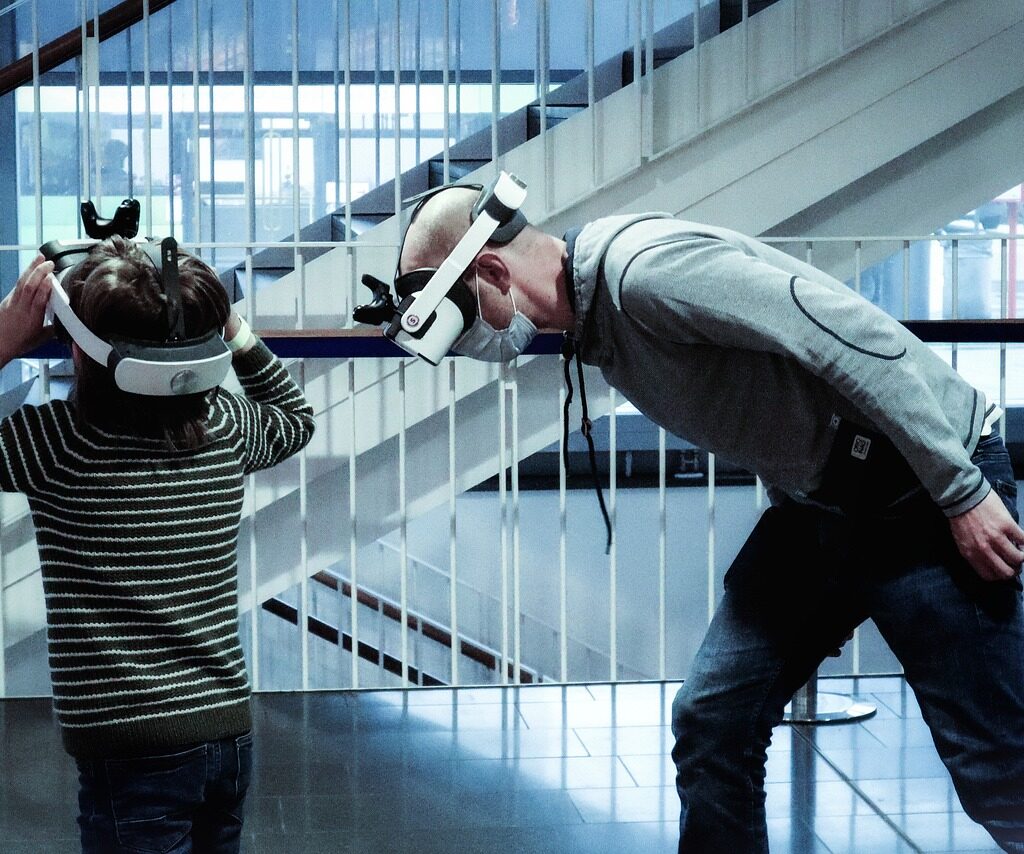The term Metaverse was coined by science fiction author Neal Stephenson in his 1992 science fiction novel – Snow Crash. In his novel, he created human avatars and software agents who met in realistic 3D buildings and other virtual reality environments. His characters used digital avatars to explore an online, virtual world and escape their dystopian reality. In his novel, Stephenson describes a virtual-reality world and depicts futuristic technologies amazingly similar to mobile computing, virtual reality, wireless Internet, digital currency, smartphones, and augmented-reality headsets.
There have been significant changes in the field of AR, VR, and gaming since the 1990s though. And now with Mark Zuckerberg rebranding his company from Facebook to Meta in late 2021, the Metaverse has gained tremendous momentum. Though Zuckerberg’s main objective behind the name change was to position his company at the forefront of a new digital frontier called the Metaverse, it has currently become a major buzzword in the field of emerging technologies, business, and finance. Ambitious brands and businesses aspire to leverage the features of the metaverse that will come with rich, real-time, globally-interconnected virtual- and augmented-reality environments to connect with their prospective audience. This will enable billions of people to work, play, collaborate, and socialize in entirely new ways and provide them with the best user experience.
So what exactly is the Metaverse? Metaverse is a collection of virtual worlds, created by the merging of virtually enhanced physical and digital reality. Here users can connect, chat, meet, buy products, and participate in games. It combines multiple technologies such as augmented reality (AR), virtual reality (VR), cryptocurrencies, social media, and online gaming. To put simply, the metaverse is a network of 3D virtual worlds that runs parallel to our physical life and uses concepts of social media to create social connections. It can be described as a simulated digital environment that uses head-mounted displays (HMDs), an AR cloud, the Internet of Things (IoT), 5G, artificial intelligence (AI), and spatial technologies to create virtual spaces for rich user interaction mimicking the real world. The user interactions in these online spaces that we coexist in are more multidimensional and free from the restraints of our human suits. Instead of merely viewing digital content it will allow an immersive, persistent, and three-dimensional digital experience where users will be able to immerse themselves in a space where the digital and physical worlds merge. Besides consuming content users can themselves become part of the content as metaverse uses augmented reality spaces which is a technology that overlays visual elements, sound, and other sensory input onto real-world settings. Here objects from the virtual world are projected into the real world via our screens to enhance the user experience. On the other hand, virtual reality will allow people to use their 3D avatars to interact socially and professionally. Any individual can connect, work, play, build communities, buy, sell, invest in currency, take classes, work, travel in 3-D virtual reality, or enjoy immersed content. Mark Zuckerberg while explaining the metaverse, demonstrated how one can be tossed into a virtual video call at any moment using VR technology. That was quite staggering and at the same time fascinating to see how virtual reality can enhance virtual experiences as well as fictional realities.
The growing attention on the potential of metaverse has led to powering up the top metaverse projects by huge tech companies such as Facebook, Microsoft, and NVidia. These big participants aim to work on their own metaverse solutions to create a diversity of experiences for their users. Brands are looking for opportunities to join businesses that offer the possibility to position themselves on metaverse platforms. Hence they sign up on these metaverse platforms or invest in metaverse-based projects. The following is a list of the most popular metaverse platforms each with its own unique features and functionalities.

1. Decentraland: Decentraland is a 3D virtual world powered by the Ethereum blockchain where users can create, trade, monetize, and explore a virtual world. Here users can purchase plots of virtual land using it’s native token, build 3D scenes, and create games with which other users can interact. Users can trade NFTs, vote on governance proposals and have complete control over their environment. In other words users have complete control over their experiences and applications they create and deploy on their lands. It can be called a virtual social world where users can host conferences, play games, and trade virtual products in marketplaces. Top global events hosted by Decentraland include the Buffalo Metaverse Tour, Australian Open Metaverse, Drop, and many others.
2. Sandbox: The Sandbox is a blockchain-based platform that manages real estate projects for 2022. Similar to Decentraland, it sells virtual lands. It is a rich 3D world where you can set up virtual businesses, build virtual mansions, host parties, and exhibitions . It is hosted on the Ethereum blockchain where players can use Sandbox for creating, selling, purchasing, and monetizing virtual reality NFTs.

3. Roblox: Another popular platform is Roblox, an online game platform designed for kids and adults. It is famous amongst gamers with 24 million active users globally though not hosted on the blockchain. The platform is free to use where users can come together and play games made by developers and other players. The developers can monetize the games using its native currency called the Robux.

4. Axie Infinity: Axie Infinity is a blockchain-based game that features flying robots, magical creatures, mutants, and flying beasts. The environment looks more like any other online multiplayer game where players breed digital pets called Axies and develop, expand, or defend their universe during battles and wars. It leverages the blockchain technology to create a complex economy for its players within the game’s universe, which in turn helped its popularity skyrocket as one of the best metaverse platforms with gaming applications.
5. Bloktopia: Bloktopia is a 3D metaverse designed as a virtual skyscraper with 21 levels. It features virtual real estate blocks where users can purchase designated spaces from the floor plan using BLOK as its native currency. Powered by the Polygon Network, the Bloktopia platform offers a wide range of opportunities for revenue generation with new virtual experiences. Revenues can be earned in multiple ways such as games, advertising revenues, real estate ownership, etc. Users can create artwork, games, participate in social activities, learn about cryptocurrency, buy real estate and even attend promoted events in its virtual auditorium.
The Metaverse is a network of simulated digital environments that focuses on social interaction. It creates online spaces for interaction by utilising persistent virtual worlds, blockchain, and augmented reality. This is facilitated by mobile internet as well as augmented and virtual reality headsets

